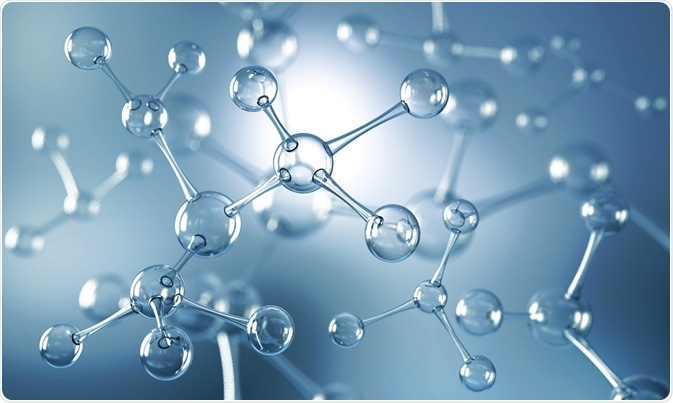The metabolome is defined as the complete set of small molecule metabolites present within an organism or cell.
 Image Credit: Anusorn Nakdee / Shutterstock
Image Credit: Anusorn Nakdee / Shutterstock
In humans, the metabolites that make up the metabolome have a molecular weight ranging from 50 to 1500 kilo Dalton, and includes molecules such as glucose, cholesterol, ATP, lipids, amine neurotransmitters, amino acids, organic acids, and steroids that are synthesized during metabolism.
To be precise, the entire range of small molecules, which altogether form the metabolome, are active participants in metabolic reactions that are essential for normal physiological functions.
Apart from endogenous factors, chemicals arising from human-environmental interactions and dietary resources can also substantially contribute to the metabolome.
Chemical reactions within the metabolome
The term ‘metabolome’ was first coined by Oliver and colleagues in 1998, during their work on the systemic functional analysis of the yeast genome.
Unlike the genome and proteome, which provide information regarding the substances that act as catalysts in biochemical reactions, the metabolome describes biochemical reactions in terms of their substrates and products.
The metabolome is very dynamic, as small metabolites interact with each other, and are constantly synthesized, and degraded within a particular biological system, between systems, and also with environmental factors.
The concentrations of metabolites, which define the metabolome at any given time point, strictly depend on metabolic reactions, a cascade of enzyme-catalyzed biochemical reactions wherein the end-product of a reaction becomes the substrate for the next reaction.
The study of the metabolome is the key to decoding microscopic molecular changes at genetic and protein levels into the macroscopic phenotypes of living organisms.
The study of the metabolome
Metabolomics is the comprehensive study of metabolome present in cells, tissues, biological fluids, or organisms. Given the dynamic nature of metabolites, metabolomics can actually provide only a ‘snapshot’ of a metabolome in a given time, under specific conditions.
Magnetic resonance spectroscopy (NMR) and mass spectroscopy (MS) are the two commonly used techniques in metabolomics. MS is generally combined with gas chromatography (GC-MS) or liquid chromatography (LC-MS) to increase the sensitivity of analysis.
NMR is used in metabolomics because it is highly reproducible and quantitative in nature; however, due to less sensitivity, NMR can only detect metabolites that are present in high concentration within a system.
Metabolomics has been established in post-genomic era with the realization that genomics and proteomics provide only partial information on fundamental cellular phenotypes associated with any perturbation.
The human metabolome
The human metabolome refers to the metabolic profile of an individual. Although the complete metabolic profiling of a population is difficult to attain due to individual variations, recent estimation suggests that more than 106 metabolites are present in humans.
Various attempts have been made to generate a reference metabolome for human populations in order to make a progress in various fields, including healthcare setting, educational, and biomarker discovery.
For example, the Human Metabolome Database (HMDB) is generated as a free electronic database to provide detailed information on the metabolites present in the human body. The database contains 114,100 small molecules including water and lipid soluble metabolites as well as abundant and rare metabolites.
In addition, the HMDB also includes 4 distinct databases: Drugbank, which includes information on 2280 drug and drug metabolites; T3DB, which includes information on 3670 toxins and environmental pollutants; SMPDB, which includes diagrams for 25,000 metabolic and disease pathways; and FooDB, which includes information on 28,000 food components and additives.
Metabolic profiling
Targeted metabolic profiling of a specific metabolic pathway to understand the cellular consequences of a given perturbation is generally accomplished by using a combination of stable isotope tracers and isotopomer-based metabolomic analysis.
Untargeted metabolic profiling can identify a large number of chemicals that are often regarded as ‘unknown’ metabolites. Environmental and dietary factors and commercial products are the major contributors to this ‘unknown’ part of the human metabolome that can significantly alter the metabolic scenario.
Sources:
- The Human Metabolome Database.
- Metabolome.
- Oliver et al. (1998). Systematic functional analysis of the yeast genome. Trends in Biotechnology, 16(9), 373-8.
- Zamboni, N., Saghatelian, A., & Patti, G. J. (2015). Defining the Metabolome: Size, Flux, and Regulation. Molecular Cell, 58(4), 699–706.
Further Reading